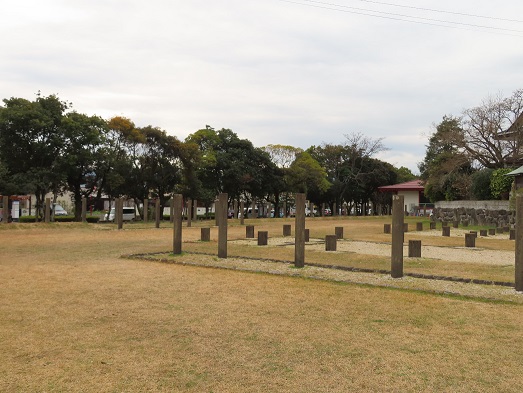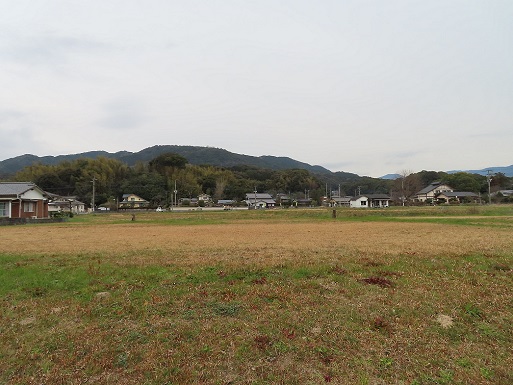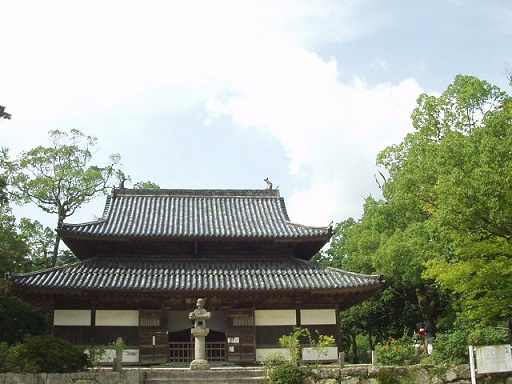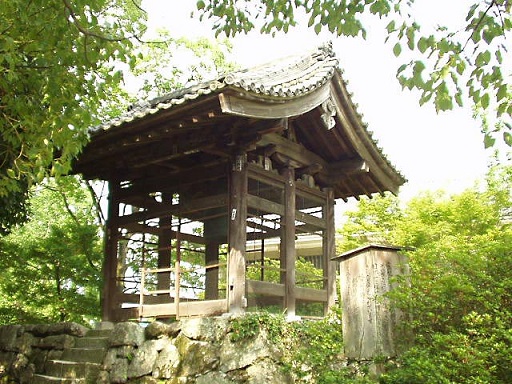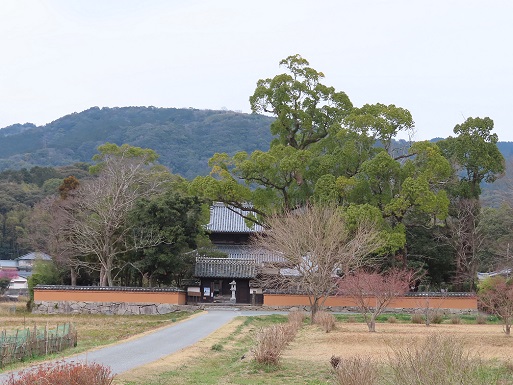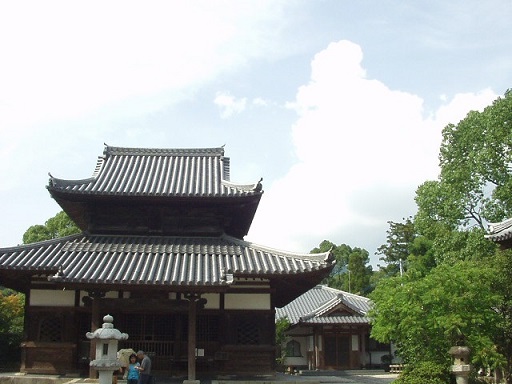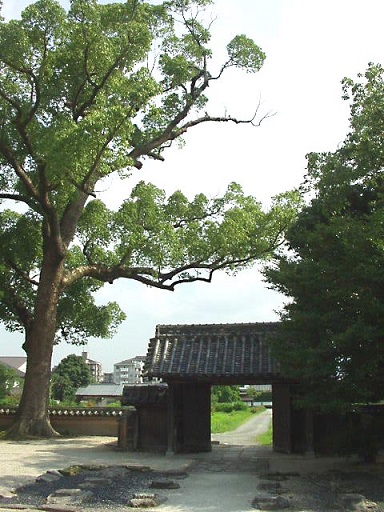|
Ruins of Dazaifu Government

The Dynasty in Japan located the Dazaifu Government Office in the late seventh century in Dazaifu, Fukuoka, in order to govern Kyushu Area and to manage military and diplomacy activities to China and countries in the Korean Peninsula. In the seventh century, other government offices were also located in other western areas, like in Shikoku Island and in the west part of the Japan Main Island. However, the Dazaifu Government Office is officially recognized as the only government office in Japan by Taiho Code issued in 701. 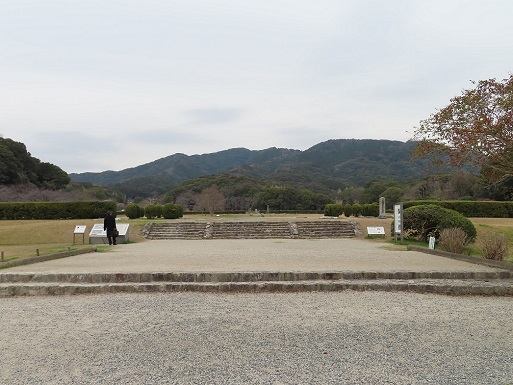
If you go up the stone steps, you will be at the site of the government office. The government office had 222 meters (728 feet) long to the north and south, 111 meters (364 feet) width to the east and the west. 
The "Nandaimon" Gate, the main gate of the Dazaifu government office, the middle gate and the "Seiden", the main building, are located on the central axis of the government office. The corridor is surrounded on the periphery of the office through the middle gate and the main building. 
At the main building, the chief officers of the Dazaifu Government worked and official ceremonies were held. SUGAWARA-no Michizane (845-903) was one of the chief officers. He demoted to the position in 901 and died three years in 903.Please refer the page of "Dazaifu Tenmangu Shrine", where SUGAWARA-no Michizane is enshrined: http://handejapan19.html.xdomain.jp/TravelDestinations/Kyushu/DazaifuTenmangu_E.html On the site of the main building, there are three stone monuments against Mt. Iwao. 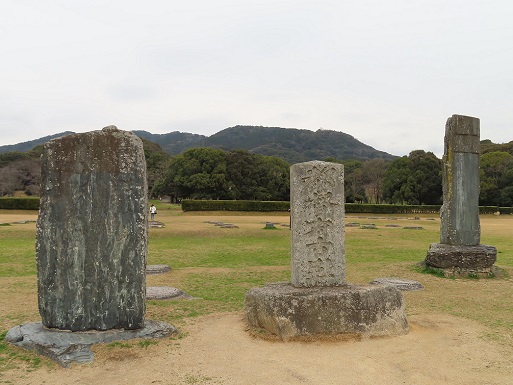
Ohnojyo Castle was built on Mt. Shiouji, located behind Mt. Iwao in 664 to protect the Dazaifu Government Office. 
You will see the foundation stones of the rear building, located behind the main building. Only, these foundation stones handed down the Dazaifu government office, which once existed thirteen hundred years ago. At the north-west corner of the Dazaifu Government Office, there is a monument engraved with a "Waka", a 31 syllable Japanese poem. The engraved "Waka" was made in 790 to celebrate new year and also beautiful Japanese apricot flowers. 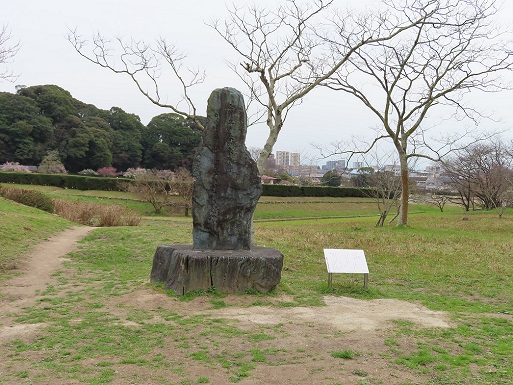
Near the Dazaifu Government Office, a couple of branch offices and other related facilities were located. To the east of the Dazaifu Government Office, there was the site of government office buildings. Nine dug-standing pillar buildings were excavated out and pillars of a building were partially rebuilt, as shown in the below left picture. |
